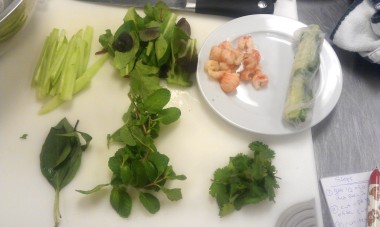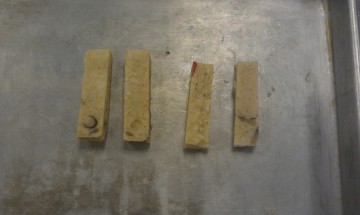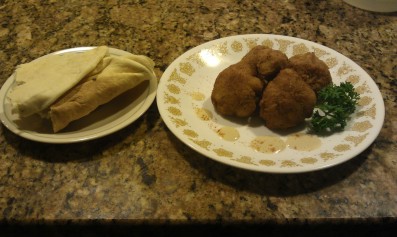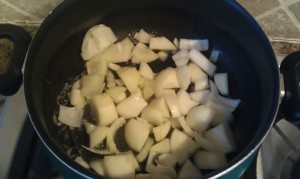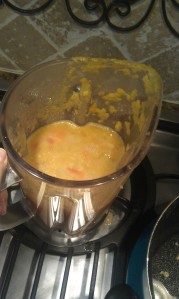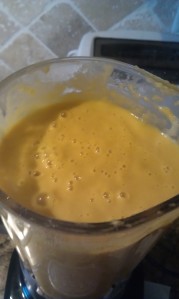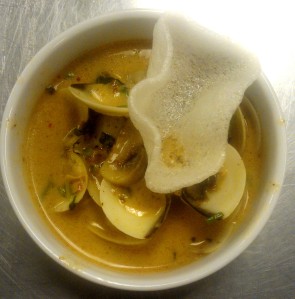
Clams! Yum right? I always wanted to learn how to cook these little suckers, but I was always worried that they might be too complicated. I was pleasantly surprised to learn that they are even easier than making an omelette! Seriously no joke here people, this dish is so easy, but so delicious that it will make even your most anti-seafood friends scarf down bowl after bowl of this yummy dish!
I don’t know about you, but I love curry. Anything in curry makes me happy. A soup that combines the rich spiciness of curry with the crisp sweetness of coconut is perfect for me. I know that often times many foreigners don’t like to cook with curry, but I really love the extra kick it adds to all of my food.
Today I will be sharing with you a quick easy recipe you can make with Little Neck Clams.
For starters what are little neck clams you may ask? Well these edible clams are little marine mollusks that live along the eastern coast of North & Central America. They are also called: hard clams or chowder clams. These clams come in many different sizes.
Looking at these little creatures at first it might be hard to imagine someone actually eating them. These clams can be prepared in several ways. They can be eaten raw with cocktail sauce, horseradish, and lemon. They can be steamed and dipped in butter. Most of the time though this breed of clam is most often used in soups and stews.
Today I’m going to share with you all a recipe I learned for Little Neck Clams in Coconut Curry.
Little Neck Clams in Coconut Curry Soup
Ingredients:
- 3 cups of store bought Tamarind Chili Sauce
- Sesame Oil
- 2 tablespoons of chopped shallots
- 2 teaspoons of diced peeled ginger
- a pinch of chili powder
- 1 cup of thickly sliced white mushrooms
- 3 cups of little neck clams
- 1- 8 oz. can of coconut milk ( you can add more coconut milk if you want more soup liquid).
- 1 tablespoon of fresh cilantro
- Optional: Plain rice crackers as garnish
Tools:
- a pan
- a wok
- cutting board
- sharp knife
- slotted spoon for stirring the clams
- a stove
Directions:
- If your clams are frozen then first you need to let them thaw. Make sure to thaw them overnight by soaking them in clean water in a bowl in the refrigerator the day before you will cook with them. Just place the frozen clams in an airtight container filled with ice water that is enough to cover them all completely. Raw clams only survive two days in the refrigerator before bacteria renders the seafood unsafe to eat. So if you thaw them out you need to be ready to use them immediately.
- After your clams have been thawed you want to quickly rinse them off in cool water making sure to remove any grime or sand that might have come out of them while they thawed.
- To cook the clams first wash, dry, and chop up your shallots, ginger, mushrooms, and cilantro.
- Next take out your wok and turn the heat on to medium. Put some sesame oil in the wok and then add in the chopped shallots, ginger, and mushrooms. Also add in the pinch of chili powder. Stir the ingredients in the pan for about a minute in the pan before you add in anything else.
- After that throw in the little neck clams into the wok with the shallots and mushroom. Let the mixture simmer in the water until it comes to a rolling boil. Allow the clams to cook in the boiling water. Allow the clams to simmer for 3 to 7 minutes. The clams should begin to open up on their own in this time period. If any of the shells have not opened after 7 minutes discard them because this means that the clams aren’t fresh enough to eat.
6. Once the liquid has boiled and most of the clams have opened up add in the coconut milk and wait for the mixture to come to a boil again.
7. Add in the cilantro and the 3 cups of Tamarind Chili sauce and stir into the pot until the sauce dissolves into the liquid soup. Wait until the sauce comes up to a boil again.
8. After the sauce has boiled, add in the entire can of coconut milk, and mix it in. Just as a note: coconut milk and coconut crème are two different things. Coconut crème is too thick to be used in in this dish, and it will not dissolve to form the soup, so make sure that you use the milk.
9. Allow the mixture to continue to cook until the rest of the shells open for about 3 more minutes then turn off the heat.
10. Put the soup in a bowl and top it with a rice cracker and serve. You can also pour this soup on top of some steamed rice and eat it like that. Bon apetit!









